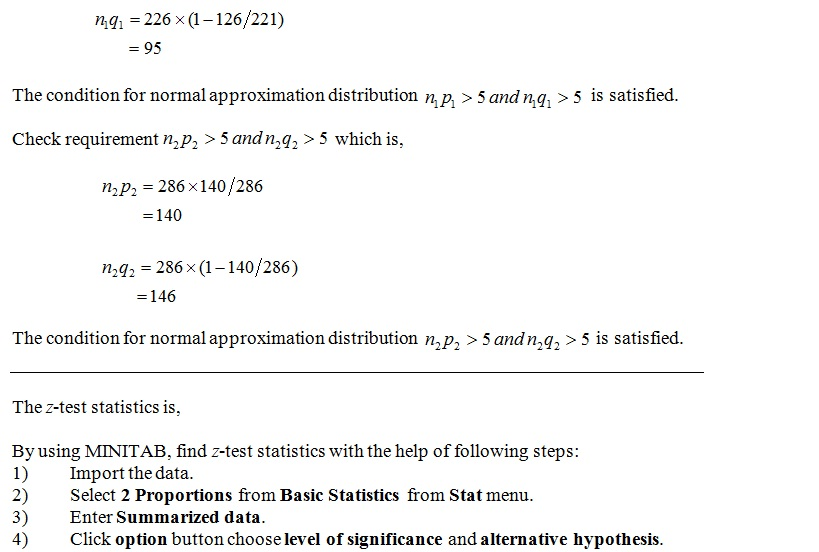Question
In: Statistics and Probability
A random sample of n1 = 286 voters registered in the state of California showed that...
A random sample of n1 = 286 voters registered in the state of California showed that 140 voted in the last general election. A random sample of n2 = 221 registered voters in the state of Colorado showed that 126 voted in the most recent general election. Do these data indicate that the population proportion of voter turnout in Colorado is higher than that in California? Use a 5% level of significance.
What is the level of significance?
State the null and alternate hypotheses.
(b) What sampling distribution will you use? What assumptions are
you making?
What is the value of the sample test statistic? (Test the
difference p1 − p2. Do not
use rounded values. Round your final answer to two decimal
places.)
(c) Find (or estimate) the P-value. (Round your answer to four decimal places.)
Sketch the sampling distribution and show the area corresponding to the P-value.
(d) Based on your answers in parts (a) to (c), will you reject or
fail to reject the null hypothesis? Are the data statistically
significant at level α?
(e) Interpret your conclusion in the context of the
application.
Solutions
Related Solutions
A random sample of n1 = 290 voters registered in the state of California showed that...
A random sample of n1 = 297 voters registered in the state of California showed that...
A random sample of n1 = 283 voters registered in the state of California showed that...
A sample of 500 male registered voters showed that 57% of them voted in the last...
A random sample of 500 registered voters in Phoenix is asked if they favor the use...
A random sample of 16 registered nurses in a large hospital showed that they worked on...
Suppose that 60% of registered voters support candidate A. A pollster will obtain a random sample...
Use the information below to answer questions 11-15. A random sample of 1000 voters registered in...
In a survey of 3450 registered voters who reside in California, 1789 were found to be...
In a random sample of 11 11 residents of the state of California, the mean waste...
- Two stationary positive point charges, charge 1 of magnitude 3.05nC and charge 2 of magnitude 1.75nC...
- An engine operates with four essential variables controlling its operation. For the engine to be operating...
- Bonnie and Clyde are married and have purchased a comprehensive major medical policy which covers them...
- steam given inlet properties. It exits an isentropic turbine with a heat loss of 20 kj...
- The mean cost of domestic airfares in the United States rose to an all-time high of...
- Andretti Company has a single product called a Dak. The company normally produces and sells 81,000...
- c++ problem: Implement a class money. You must have friend functions for I/O that overload <<...





 orchestra answered 3 years ago
orchestra answered 3 years ago